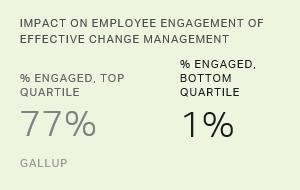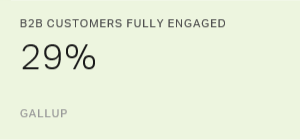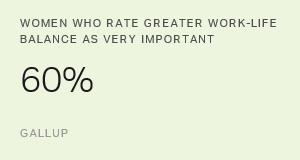Story Highlights
- When executive teams are engaged, managers are 39% more likely to be engaged
- Engaging front-line managers is critical to engagement and performance
- Managing engagement at all levels is a key to navigating financial challenges
Companies are facing a storm of financial challenges.
Among them are a sluggish economy, activist investors demanding accountability, continued increases in mergers and acquisitions as a primary source of growth, and a host of government regulations, particularly in the financial and healthcare sectors.
All of this turbulence, and the change and uncertainty it causes, has led executives to rethink their employee engagement strategies and change management initiatives.
Leading a company through challenging financial times and rapid change requires engaged executives and committed employees with the right talents and strengths to solve business problems and optimize performance. For change initiatives to succeed, leaders need to engage employees at all levels. This trickle-down effect of engagement from executive leaders to managers to employees boosts performance, productivity and profits.
Struggling to Adapt and Evolve
However, the majority of the organizations that Gallup has studied struggle to adapt, evolve and change how they achieve strategic objectives when faced with external challenges. For example, a financial services client recently sought Gallup's help to align its people and culture with the core business strategy. The company discovered that changes to their operating model and a difficult restructuring process failed to deliver the financial results they anticipated. Increasing engagement and developing change management capability among leaders and managers were crucial to improving organizational effectiveness.
Effective change management can enhance employee engagement, even during times of uncertainty. Nearly eight in 10 employees (77%) are engaged when workers strongly agree there is open communication, opportunities to provide input, a clear connection between current changes and the company's future, and management support for changes that affect their workgroup. When employees strongly disagree, a mere 1% are engaged.

Gallup research shows a relationship between high levels of engagement and confidence in a company's future, and further -- that the best leaders create a sense of hope and optimism among employees. What happens if leaders mismanage fear and uncertainty? Engagement levels can drop, putting a company at risk for lost productivity, negative customer experiences and flight of top talent.
How to Build Engagement While Managing Change
To foster and sustain employee engagement, leaders should make open communication from the top-down a priority. Effective communication can be as simple as being honest and upfront with employees. It must go beyond impersonal companywide announcements, and leaders need to be able to answer tough questions. Employees need to feel valued and supported, and it's a good idea to provide updates to them at least weekly.
Involve everyone. Employees might feel fearful about their job security and wonder about their future with the company. Help employees understand why changes need to happen and involve them in problem-solving. Finding opportunities to bring employees into planning, cost-cutting or other improvement efforts will help them feel like they have more control over their future.
Address factors that are controllable. Align senior leadership on the strategy, structure, process and people to enable a culture of change. Address the reasons why employees are becoming disengaged by focusing on their needs. Instill accountability and trust within the organization.
Set tough but realistic goals. Motivate employees by making goals achievable and in their span of control. Set clear expectations and communicate changes as roles within the company shift. Focus on driving customer engagement.
Empower front-line managers and supervisors. Though maintaining engagement at the executive level is crucial as leaders steer a company during rough patches, local managers have the greatest impact on employee engagement levels. Gallup finds that supervisors who work for engaged leaders are 39% more likely to be engaged, and employees who work for engaged managers are 59% more likely to be engaged.
Focus on strengths. Empower employees to maximize their talents and do what they do best. That means encouraging employees to use their strengths every day. Teams that focus on strengths every day have 12.5% greater productivity, and people who use their strengths every day are six times more likely to be engaged on the job.
The most successful organizations that Gallup has worked with in these situations have one thing in common: Senior leaders and managers are ready, willing and able to tackle their workplace engagement problems. These leadership teams understand that change makes employees feel uncertain about their future with the company, and even the company's financial future itself, which in turn affects their engagement. As executives rethink short-term security and long-term growth, it's crucial to hardwire engagement as a core performance strategy.


